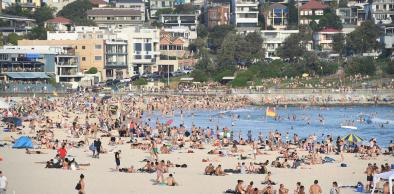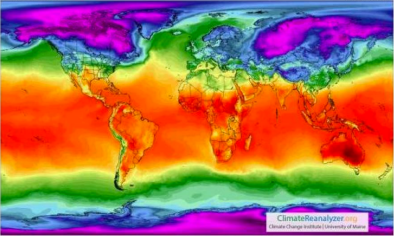Warming Had Clear Hand in Record Australia Heat

Australians are no strangers to stifling summer weather, but the unrelenting heat of the past few months in the country’s southeast has put this summer in the record books. Now, a new analysis links that heat directly to climate change, finding warming made such events up to 50 times more likely and hotter.
Three major heat waves struck the southeast of Australia through January and February, with the worst of the heat coming during the last event, from Feb. 9-12. During that time, many places recorded temperatures over 113°F (45°C); New South Wales as a whole broke the record for hottest February day twice, with more 93 percent of the state recording temperatures 18°F (10°C) above normal on Feb. 11.
But it wasn’t just those particular heat waves that made the summer notable, it was also the persistence of above-average temperatures in between those more extreme bouts. One-third of New South Wales had 50 days of temperatures at or above 95°F (35°C), and both the state and Sydney had their hottest summers on record.
...
That human-caused warming is boosting summer heat waves in Australia has been shown by many attribution analyses, which use observations and climate models to look for the fingerprints of climate change in extreme weather.
...
A trend toward more and more frequent heat waves has already become clear in many places, including Australia, where it has become particularly pronounced over the past 20 years, according to the Bureau of Meteorology.
Earlier studies have found a clear climate change signal in extreme heat events in Australia, including the record-hot year of 2013.
“Pretty consistently — we’ve found a human signal behind every hot seasonal or monthly record, particularly over large regions,” Kirkpatrick said.
...
...the average summer temperatures experienced in New South Wales were at least 50 times more likely than they were in 1910, before warming had a big impact on the climate but when reliable observations were available.
The maximum temperatures experienced over the same area were 10 times more likely with warming, going from a 1-in-500-year event to 1-in-50 year event.
...
And in the future, the frequency and intensity of such heat waves will increase even more. Summer heat like that experienced in New South Wales could become a 1-in-5-year event once temperatures are 3.6°F (2°C) hotter. That is the amount countries have pledged to limit warming by; when such a level is reached depends on how much greenhouse gas emissions are reduced and how quickly.
Related Content






